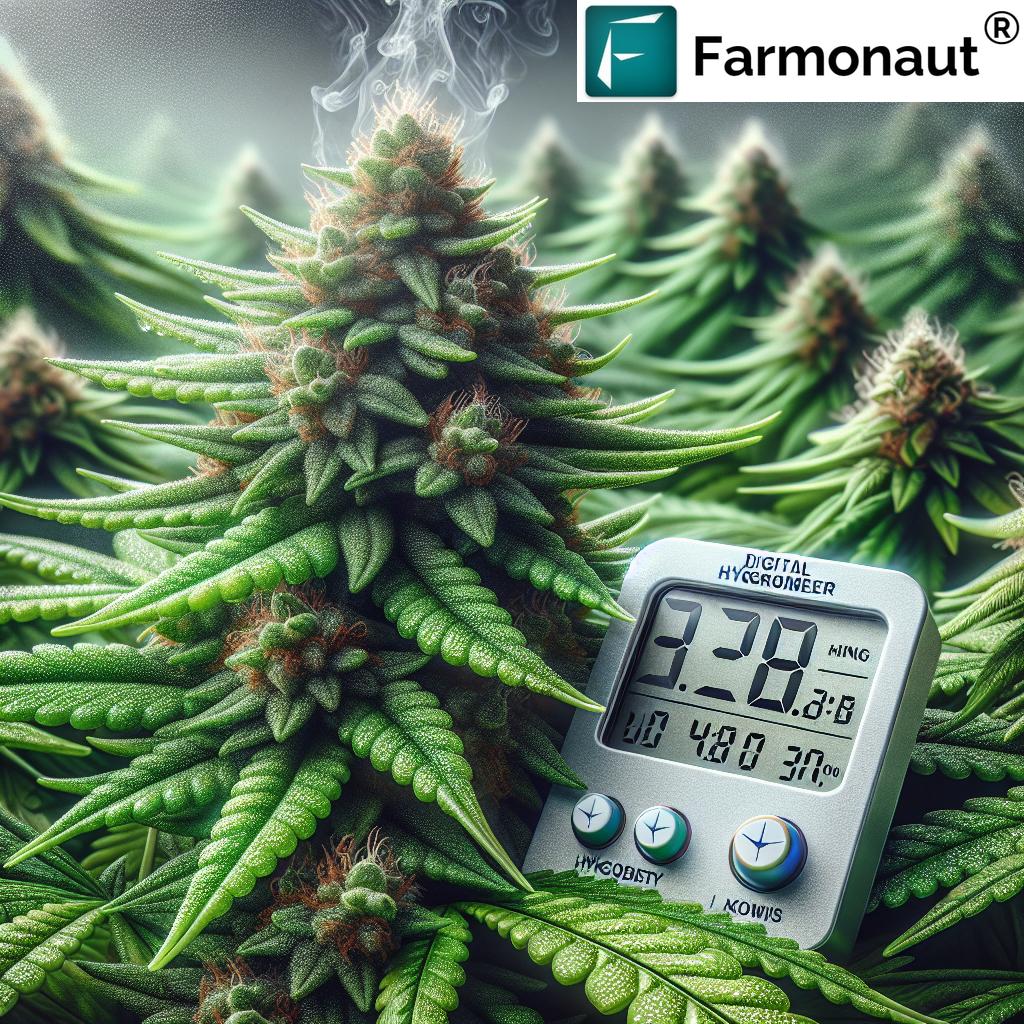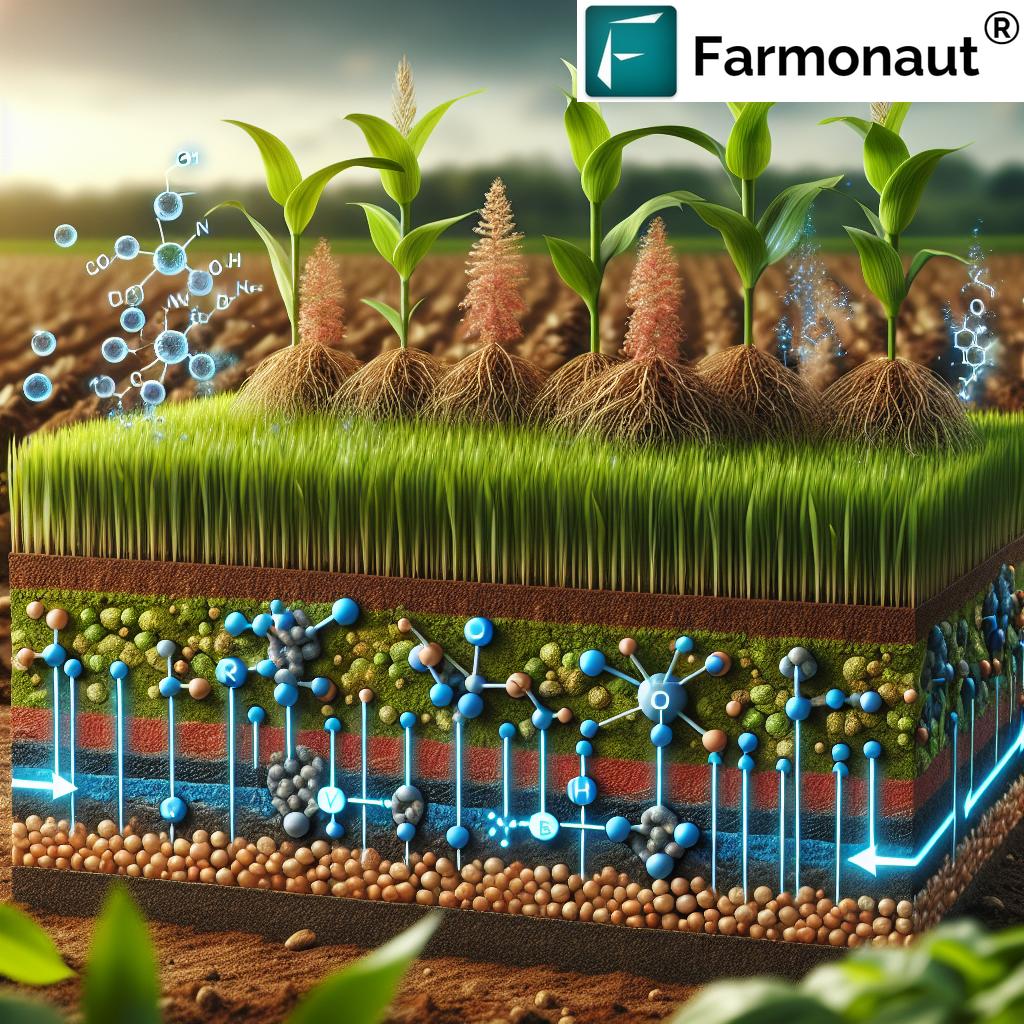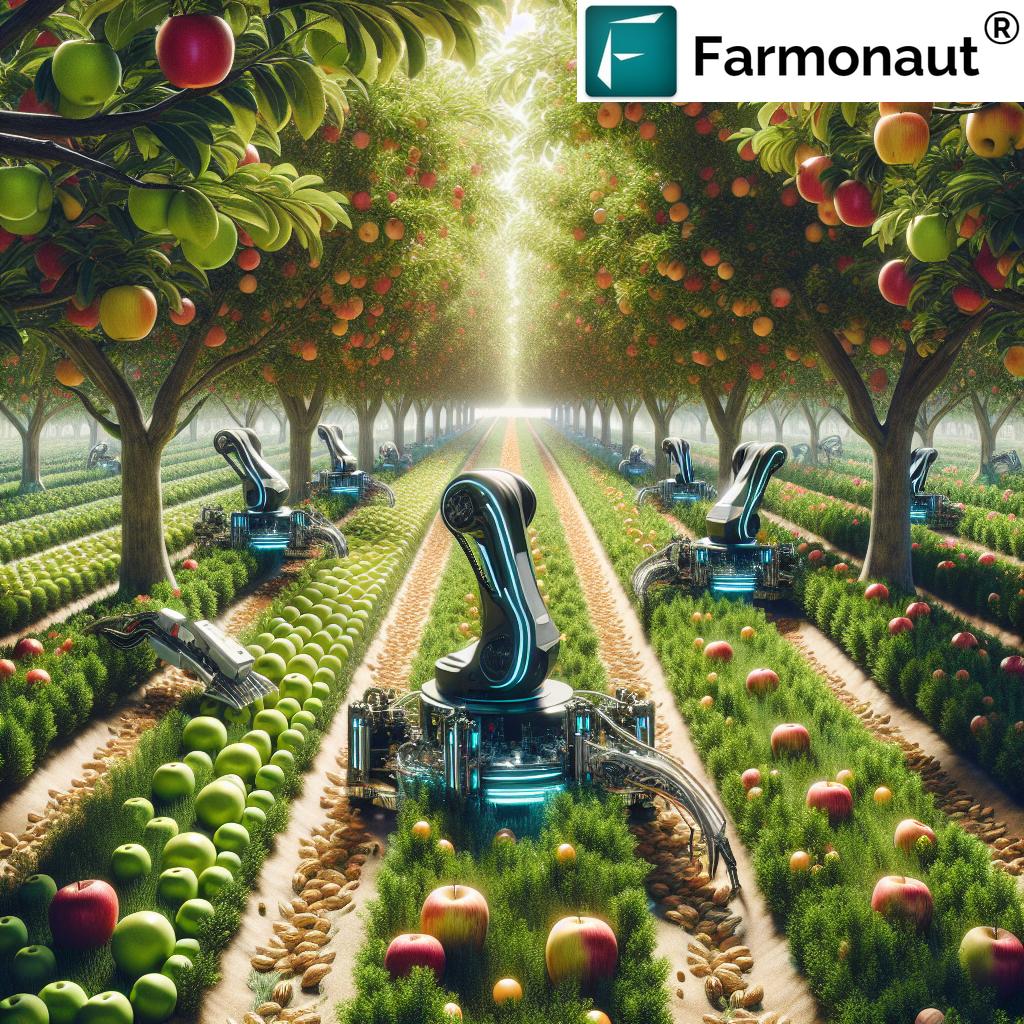Humidity During Flowering: Shocking Tips to Explode Yields!
Table of Contents
- Understanding Humidity in the Flowering Stage
- The Importance of Humidity During Flowering for Exploding Yields
- Optimal Humidity Levels During Flowering
- Risks of High Humidity During the Flowering Stage
- Benefits of Lower Humidity During Flowering
- Humidity Management: Monitoring & Control Techniques
- Stage-wise Humidity Guide Table
- Seasonal Humidity Considerations for Cannabis Cultivation
- Integrating Farmonaut’s Satellite-Powered Precision in Humidity Management
- Powerful Farmonaut Tools for Cannabis Growers
- Video Tutorials: Leveraging Technology for Optimal Humidity & Yields
- FAQ: Humidity During Flowering Stage
- Conclusion: Master Humidity to Explode Flowering Yields
Understanding Humidity in the Flowering Stage
Humidity during flowering stage plays a pivotal role in shaping overall plant development and yield quality—especially for species like cannabis where dense buds form. As we progress into this crucial phase, our plants begin to form tightly packed, moisture-retaining flowers, making humidity management more essential than ever before.
During this stage, excess moisture around buds can lead to fungal infections such as mold and mildew, directly impacting bud quality and reducing overall yields. Maintaining the optimal humidity for cannabis is not only about avoiding diseases—it’s also about promoting resin production in flowering, which ensures superior quality and potency in the final product.
Let’s dive deeper into why carefully controlled humidity is vital during the flowering stage of cannabis and similar high-value crops.
The Importance of Humidity During Flowering for Exploding Yields
Our understanding of humidity levels for plant growth directly influences how we prevent mold in buds, deter mildew, and optimize both resin and yield. Why is this so important during the flowering stage?
- Dense Bud Structure: As plants flower, buds become denser and contain more trapped moisture, creating an environment susceptible to fungal diseases like botrytis (commonly known as bud rot).
- Vulnerability Window: The flowering stage presents a narrow window where mistakes in humidity management can have outsized negative impacts—including reduced resin production and poor bud structure.
- Direct Impact on Quality: Incorrect humidity levels may lead to stunted growth, yellowing leaves, and weakened stems, ultimately affecting both yield quantity and quality.
Ultimately, maintaining RH at the right levels is the key to ensuring that our plants thrive, mold and mildew are kept at bay, and the resulting buds have that signature resin-packed finish that growers desire.
Optimal Humidity Levels During Flowering
Recognizing the right humidity for your flowering room is essential to optimize plant health. Over decades, cultivators have refined guidelines to ensure a safe, effective, and high-yielding growth environment. These monitored and controlled conditions are especially crucial for species like cannabis.
Let’s break down the recommended RH for each flowering sub-stage:
Early Flowering Stage
- Relative Humidity (RH): Maintain between 40% and 50% (source: QuestClimate)
- Why: Allows healthy transpiration and nutrient uptake while minimizing mildew risk.
Late Flowering Stage (Final Weeks)
- Relative Humidity (RH): Reduce further to 35%-50% (source: AltaQua)
- Why: This drop in moisture helps prevent mold in buds, deter fungal infections like bud rot, and boost resin production.
Pro Tip: While some growers advocate dropping humidity to as low as 30% in the final 1-2 weeks to really harden buds and enhance trichome density, this should only be performed if you can monitor RH precisely and avoid overly stressing your plants.
Sticking to these humidity levels forms the basis of a mold-free, high-quality harvest and forms the core of any cannabis humidity control strategy.
Risks of High Humidity During the Flowering Stage
Let’s analyze the risks of allowing high humidity to persist during the flowering phase:
- Mold and Mildew Development: High RH creates a conducive environment for mold (especially botrytis, or bud rot) and mildew, both of which are devastating to buds (Alorair).
- Stunted Growth and Reduced Yields: Excess moisture disrupts natural transpiration, blocking efficient nutrient uptake. Leaves may yellow, stems may weaken, and final yields may suffer.
- Pest Infestations: High RH attracts pests like spider mites and whiteflies, both of which thrive in moist air and can cause significant damage to flowering plants.
Key Takeaway: The risks from too much humidity are not just theoretical—they directly translate to lost crops, diminished quality, and financial setbacks. That’s why rigorous monitoring and management is essential.
Benefits of Lower Humidity During Flowering
Reducing humidity during the flowering stage offers several compelling advantages:
- Mold Prevention: Lowered humidity dramatically reduces the likelihood of mold and mildew formation, actively protecting bud integrity (Planacan).
- Enhanced Resin Production: The slightly stressful, drier environment triggers the plant’s defense mechanism, which can boost resin production in flowering. This increases bud potency, aroma, and flavor.
- Improved Bud Quality: Proper humidity management ensures denser, stronger buds and maximizes final flower quality.
Failing to lower humidity during late flowering robs us not only of yield but also of the unique terpene and cannabinoid profiles that define superior cannabis.
Proven Strategies for Lowering Humidity
- Increase Airflow: Use oscillating fans to keep air moving around plants.
- Use a Dehumidifier for Grow Room: This tool can accurately reduce ambient moisture, stabilizing conditions.
- Maintain Optimal Temperature: Cooler rooms can help lower RH and discourage mildew.
Humidity Management: Monitoring & Control Techniques
Let’s transition from theory to practical action as we examine proven methods for monitoring and controlling humidity during the flowering stage:
1. Hygrometers for Accurate Readings
- Place hygrometers at canopy height for precise, real-time humidity readings.
- Digital models with remote monitoring help avoid disturbing the microclimate.
Top Tip: Use multiple sensors in larger rooms to detect humidity pockets.
2. Dehumidifiers for Grow Room Use
- Dehumidifiers are essential for pulling excess moisture from the air.
- Select a model suitable for your grow room size; set RH targets (35-50%) as the flowering phase progresses.
3. Ventilation and Airflow Management
- Install exhaust fans to remove humid, stagnant air; intake fans can introduce fresh, drier air.
- Consider oscillating wall fans and air pruning to prevent damp zones.
4. Environmental Controls and Automation
- Integrate humidistats and automation equipment for real-time corrections.
- Use blackout tarps or shade cloth to minimize external moisture influx.
5. Leveraging Technology for Humidity Data
- Apps and platforms like Farmonaut provide satellite-based insights on field-level moisture, including soil moisture and ambient humidity.
- For greenhouse or large-scale outdoor cultivation, this technology helps monitor macro-environmental trends and anticipate high-risk conditions.
Combine these strategies to create a holistic humidity management plan and enjoy consistently high yields and premium bud quality.
Stage-wise Humidity Guide Table
For quick clarity, our comprehensive guide table summarizes flowering stage humidity tips, estimated relative humidity ranges, major risks, and actionable best practices.
| Flowering Stage | Optimal Relative Humidity (%) | Potential Risks at this Stage | Best Practices / Tips |
|---|---|---|---|
| Early Flowering | 45–50% |
Early mold development Poor bud set |
Increase gentle airflow; monitor daily. Begin using dehumidifier. |
| Mid Flowering | 40–45% |
Botrytis (bud rot) risk Mildew on leaves |
Continue dehumidification; avoid overhead watering. Prune dense lower foliage. |
| Late Flowering / Final Weeks | 35–40% |
Severe mold outbreaks Leaf yellowing / drying out |
Maximize airflow; run dehumidifiers full-time. Monitor RH & temperature hourly. |
Seasonal Humidity Considerations for Cannabis Cultivation
Humidity management is a moving target. Changing seasons and regional ambient conditions demand adaptive strategies throughout the flowering phase.
- Summer: Ambient humidity rises; expect to run dehumidifiers more frequently when humidity during flowering stage must be lowered.
- Winter: Outdoor air can be exceedingly dry, making it necessary to use humidifiers (to avoid bud stress).
- Monsoon/Spring: Watch for sudden spikes in RH following heavy rainfall or rapid freezes/thaws.
Modern solutions—like Farmonaut’s weather monitoring and soil moisture analysis—offer powerful tools for tracking these changes at field or greenhouse level, keeping us one step ahead in humidity control.
Integrating Farmonaut’s Satellite-Powered Precision in Humidity Management
Modern cannabis and high-value crop growers benefit from integrating precision technology into their environmental monitoring toolkit. Farmonaut, as a leading agricultural technology platform, puts satellite-based, real-time data into the hands of every farmer—making precision agriculture affordable for all.
Here’s how Farmonaut can help growers with humidity management and yield improvement:
- Satellite-Based Crop Health Monitoring: Track field-level vegetation health (NDVI) and soil moisture to reveal the microclimate patterns driving humidity issues.
- Real-Time Alerts: Receive instant notifications if rising humidity or moisture trends indicate disease risk—enabling proactive intervention.
- Data-Driven Management Recommendations: Farmonaut’s Jeevn AI delivers customized climate advice to maintain optimal humidity conditions for your crop’s stage, location, and species.
- Resource Management Tools: Monitor environmental data to optimize the use of dehumidifiers, fans, and irrigation systems for precise climate control.
For developers and agronomists seeking advanced integrations, explore our Farmonaut API and in-depth API Developer Docs for satellite weather data and humidity analytics.
Powerful Farmonaut Tools for Cannabis Growers
- Large Scale Farm Management: Want to automate crop monitoring, logistics, and environmental tracking for multiple sites? The Agro Admin App efficiently organizes data across large operations—perfect for ambitious cultivators.
- Product Traceability: If selling premium, organic, or artisanal buds, Farmonaut Traceability merges blockchain security with field observations, so you can certify your crop’s journey—building trust with retailers and patients.
- Carbon Footprinting: Track environmental impact—especially water and energy use from humidity control devices—with Farmonaut Carbon Footprinting. Report, verify, and reduce your farm’s ecological footprint.
- Crop Loan and Insurance: Gain satellite-verified crop records for easier loan and insurance approvals when unpredictable humidity puts yields at risk. Details at Crop Loan & Insurance.
Video Tutorials: Leveraging Technology for Optimal Humidity & Yields
Expand your practical toolkit with Farmonaut’s step-by-step tutorial videos. Whether it’s integrating satellite weather data, monitoring crop health, or generating timelapse visualizations of environmental conditions, these resources help growers implement advanced humidity control practices effortlessly.
- How to Integrate Weather Data Using Farmonaut API – Connect real-time weather and humidity info directly to your farm dashboard.
- How to Download Weather Data via Farmonaut – Essential for tracking seasonal humidity changes.
- How to Generate Time Lapse with Farmonaut Web App – Visualize changes in crop & environment over the flowering timeline.
- Satellite-Based Crop Monitoring Overview – Understand field-scale humidity and plant health from space.
FAQ: Humidity During Flowering Stage
What is the optimal humidity for cannabis during flowering?
For most cannabis strains in the early flowering stage, maintain relative humidity (RH) between 40-50%. As you move to the final weeks (late flowering), reduce RH further to 35-45%. These levels help prevent mold and mildew, promote optimal resin production, and improve overall bud quality.
Why is humidity so important during the flowering stage?
The flowering stage produces dense, resinous buds with high moisture retention, making them highly susceptible to mold and mildew. Proper humidity management is crucial to avoid fungal infections, optimize nutrient uptake, and maximize both yield quality and quantity.
How can I prevent mold in buds during late flowering?
Lowering humidity to 35–40% in late flowering, ensuring strong air circulation, and using dehumidifiers are the best ways to deter mold. Prune crowded foliage and never allow standing or dripping water near buds.
What are signs of too much humidity in the flowering room?
Watch for drooping leaves, yellowing, weak stems, a musty smell, white powdery mildew, and premature bud rot. These signal immediate need to improve airflow and drop RH.
How does Farmonaut help with humidity and flowering management?
Farmonaut provides satellite-driven soil moisture and environmental data, AI-powered custom climate advisory, and resource management tools. These empower growers to anticipate and react to risky humidity conditions, protecting yields and maximizing bud quality throughout flowering.
Farmonaut Subscriptions: Scale Your Climate Intelligence
Choose a subscription to unlock the power of continuous satellite monitoring, real-time crop and field analytics, and AI-based advisory for any farm or greenhouse—including cannabis. Get started today:
Conclusion: Master Humidity to Explode Flowering Yields
Humidity during flowering stage is neither an afterthought nor a one-size-fits-all equation. Successfully maintaining appropriate RH across cannabis’ full flowering cycle unlocks multiple benefits: exploding yields, superior bud quality, maximum resin production, and near-elimination of devastating mold risks.
By implementing our detailed humidity guidelines, employing advanced monitoring via hygrometers, dehumidifiers, and utilizing Farmonaut’s satellite-driven intelligence, we empower ourselves to prevent issues before they start. With ongoing seasonal adjustment and technology adoption, every grower—from hobbyist to large-scale operator—can master the art and science of humidity management.
Don’t leave yields, health, or profitability to chance this flowering season. Embrace optimal humidity practice—and watch your buds explode with quality!


















